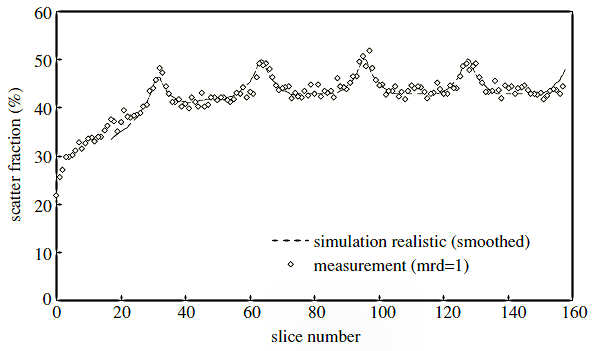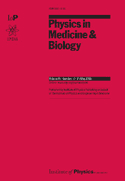| TITLE |
|---|
| AUTHORS |
| SOURCE |
(ID: 10.1088/0031-9155/52/1/014)
|
| ABSTRACT |
|
The jPET-D4 is the first PET scanner to introduce a unique four-layer depth-of-interaction (DOI) detector scheme in order to achieve high sensitivity and uniform high spatial resolution. This paper compares measurement and Monte Carlo simulation results of the static physics performance of this prototype research PET scanner. Measurement results include single and coincidence energy spectra, point and line source sensitivities, axial sensitivity profile (slice profile) and scatter fraction. We use GATE (Geant4 application for tomographic emission) as a Monte Carlo radiation transport model. Experimental results are reproduced well by the simulation model with reasonable assumptions on characteristic responses of the DOI detectors. In a previous study, the jPET-D4 was shown to provide a uniform spatial resolution as good as 3 mm (FHWM). In the present study, we demonstrate that a high sensitivity, 11.3 ± 0.5%, is provided at the FOV centre. However, about three-fourths of this sensitivity is related to multiple-crystal events, for which some misidentification of the crystal cannot be avoided. Therefore, it is crucial to develop a more efficient way to identify the crystal of interaction and to reduce misidentification in order to make use of these high performance values simultaneously. We expect that effective sensitivity can be improved by replacing the GSO crystals with more absorptive crystals such as BGO and LSO. The results we describe here are essential to take full advantage of the next generation PET systems that have DOI recognition capability.
 Fig. 12. Slice-number dependence of scatter fraction (mrd=1) for the NEMA NU2-2001 scatter-fraction phantom (LL=400 keV and UL=600 keV). |
